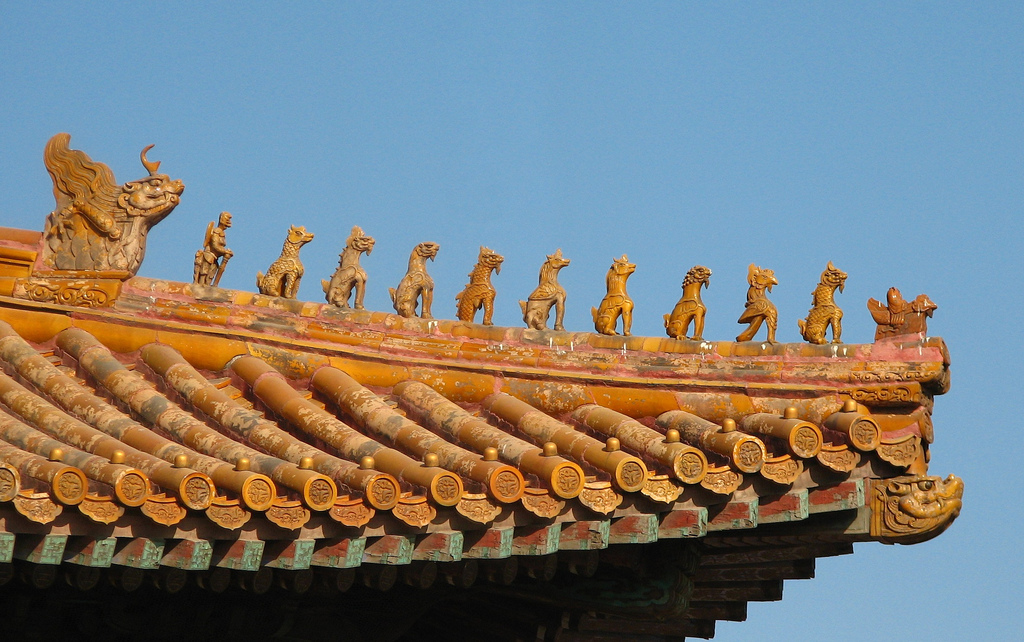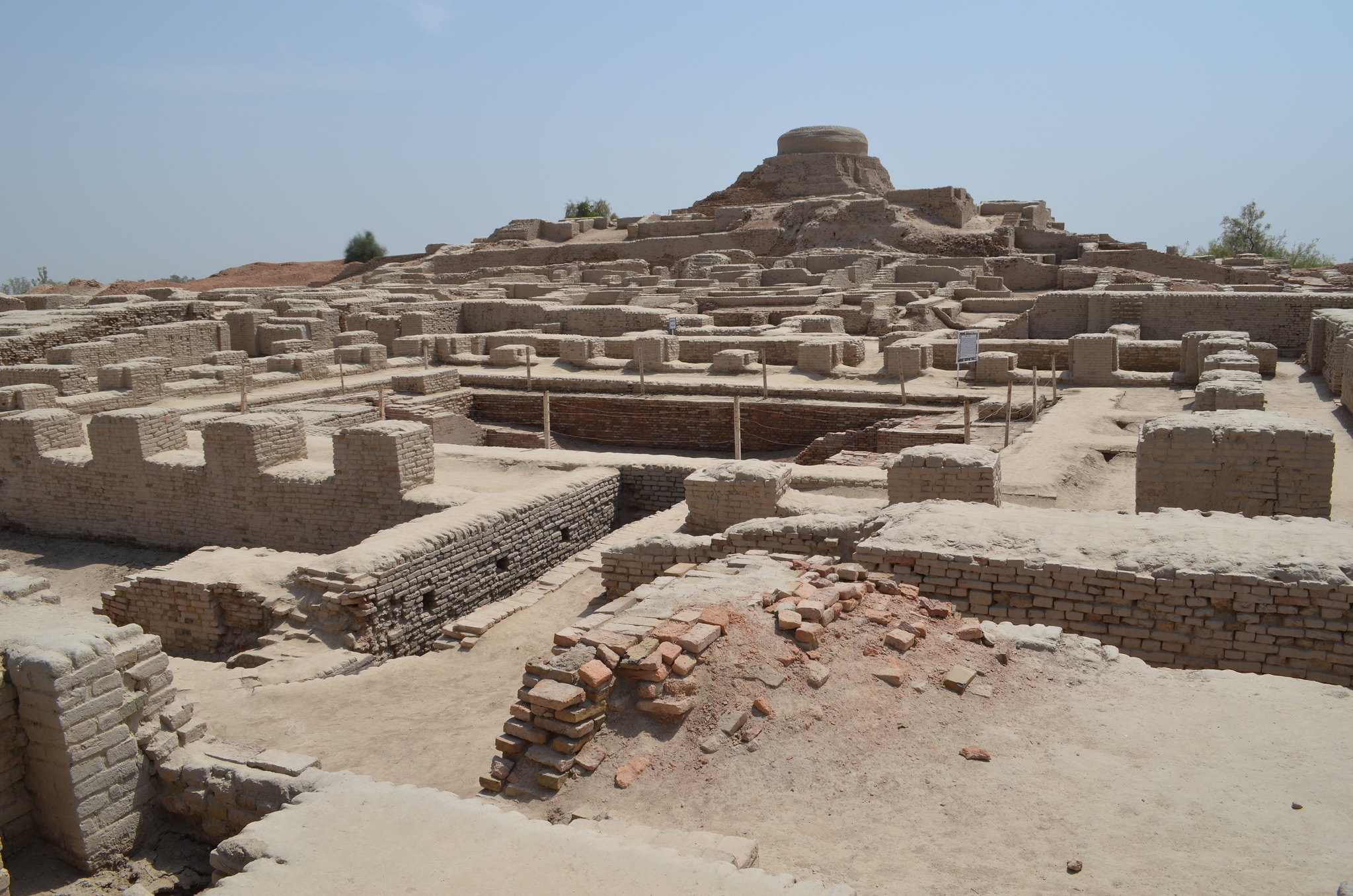Great ancient civilizations included those in China, Egypt, Mesopotamia, and the Indus Valley. We are all familiar with the results of our studies of ancient China, Mesopotamia, and Egypt. The Indus Valley Civilization, also known as the Harrapan Civilization, the fourth and most significant of these civilizations, seems to have been forgotten. The fact that this previously unknown society apparently did not participate in combat and left few indications as to its final end has baffled archaeologists and historians ever since its rediscovery in the twentieth century.
So, without further ado, here are ten mind-blowing details about the Indus Valley culture.
Table of Contents
10. Size and Population
![]()
Approximately 486,489 square miles (1,260,000 square kilometers) over modern-day India, Afghanistan, and Pakistan was home to the Indus Valley Civilization. Only 96 of the more than 1,056 urban sites and villages associated with the Indus Valley Civilization have been unearthed thus far.
Many of the settlements were dispersed over the large region bounded by the Indus, Ghaggar-Hakra, and their tributaries. Rakhigarhi, Harappa, Ganweriwala, Dholavira, and Mohenjo-Daro were the largest cities, with a combined population of almost five million.
Around 7000 B.C., the Indus Valley’s first permanent settlement, Mehrgarh, was created. Most people in the Indus Valley worked as craftsmen or merchants and lived in small towns.
Since mud and wood are so quickly destroyed, it is likely that very little evidence of their daily lives and cultural practices has survived the centuries.
However, we now know from archaeological discoveries that the Indus Valley civilization was very advanced and well organized. Cities were densely inhabited, yet unlike those of their counterparts in Mesopotamia and Egypt, they were not a mess.
They sometimes would have embarrassed contemporary urban designers.
9. Urban Design
The towns of the Indus Valley Civilization were the first in the world to be planned and built according to a grid system, with streets crossing each other at right angles.
In terms of city planning, these developments predated those of Hippodamus of Miletus, sometimes called the “father of European urban planning.” Each city’s main thoroughfares ran north to south, while side streets ran east to west.
These cities followed a standard pattern and design, and their drainage systems were among the best in the world. All of the home bricks were the same uniform size.
Main highways were often as broad as 33 feet (10 meters), which led archaeologists to speculate that commercial activity took place on these thoroughfares.
Even the streets at Harappa were designed with the convenience of ox-drawn carts in mind, being paved with baked clay bricks and equipped with channels to divert rainwater.
In fact, their sewage system was so cutting-edge that it had its own dedicated pipes beside the streets, rather than sharing them with rainfall.
Underground sewage systems included channels and drains that were accessible via terracotta covers for periodic maintenance. It wasn’t until thousands of years later that the Romans constructed their spectacular aqueducts.
8. Sanitation and Personal Hygiene
![]()
It has been shown that the people of the Indus Valley Civilization paid close attention to these issues, and as a result, they had long, healthy, and disease-free lives. Hygiene is emphasized in the lives of people, with many public baths, a novel water conservation system, water supply to each home, clean sewage systems, and remarkable subterranean wastewater systems.
Even more impressive are the trash cans that have been strategically placed every few meters along Mohenjo-Daro’s roadways.
This shows that even when compared to other ancient civilizations, Indus Valley culture was decades ahead of its time in terms of municipal development. In most cases, residents would utilize these brick barrels for rubbish disposal and disposing of worthless objects.
7. Religion
All the cities uncovered in the Indus Valley have been complex and well-planned, showcasing advanced Bronze Age organization and construction methods.
Despite these hallmarks of societal complexity, no trace of ornate tombs, private shrines, massive temples, or standard royal palaces has ever been found in any of these ancient cultures. Historians have speculated that this indicates the Indus Valley Civilization was a democratic or egalitarian society.
After over a century of digging and studying, there is still no hard evidence of a ruling caste or even a hierarchical class of administrators.
Common misconceptions and false assumptions about the wealth distribution, personal connections, knowledge, and urbanization of humanity’s ancient history are the reason this has not been discovered, not the Indus society’s lack of complexity and intelligence.
The Indus Valley culture only provides more evidence that a ruling or governing elite is unnecessary for the development of advanced societies.
6. Economy

Agriculture, commerce, and trade was the backbone of the Indus Valley’s economy. In their writings from the Middle Bronze Age, Mesopotamian (Sumerian) chroniclers often referred to a prosperous commerce with a place called “Meluhha.”
Meluhha was an active trade country that sent vast amounts of ebony and wooden goods to the Sumerians due to their close economic relations. Meluhha, which archaeologists think was the Indus Valley Civilization, was the primary exporter of sesame oil and other exceedingly costly or opulent products, such as lapis lazuli.
The Indus Valley Civilization was not only the first cotton producer in the world, with evidence of cotton usage dating back to the 6th century BC, as shown by the discovery of the vast Lothal Dockyard.
Fair commerce was maintained by a system of weights and measures manufactured from limestone, some of which have been discovered in and around the Lothal Dockyard. Farmers in the valley also refined their spinning and weaving skills.
https://www.investopedia.com/terms/e/economy.asp
5. Artists and Creativity
![]()
Artists and their creations throughout the Indus Valley civilization were very advanced. The aesthetic beauty and material diversity of their objects, which include pottery, copper, bronze, and various local rocks, attest to a high degree of achievement.
They also developed an advanced method for producing stones. Since the third millennium BC, the number of creative efforts has increased dramatically. Numerous statues and sculptures, pieces of pottery and jewellery, clay figures, and other such objects have been unearthed from the different archaeological sites.
The bronze “Dancing Girl,” which demonstrates the Indus people’s mastery of metal twisting and casting, is a remarkable find. It also suggests the cultural weight of dancing in prehistoric times.
In his words, “When I first saw her, I found it hard to believe that she was prehistoric,” stated the renowned archaeologist Sir John Marshall. The Dancing Girl and other incredible works of art were cast in wax using a method that has now been forgotten but was documented long before the art of the Greeks.
https://edu.gcfglobal.org/en/creativity/what-is-art/1/
4. Advances in Architecture

Harappa’s granaries were formerly state-of-the-art. The technology required to construct them was lost for about 2,800 years until it was rediscovered in Rome. The six granaries discovered at Harappa were around 148 feet (45 meters) in length and 49 feet (15 meters) in width, and they were constructed on elevated platforms to protect them from floods.
This ancient culture employed two types of standard-burned bricks for all of their construction needs. One was exactly 2.75 inches tall, 5.5 inches wide, and 11 inches long, or 7 x 14 x 28 centimetres; the other was exactly 3.9 inches wide, 7.9 inches deep, and 15.7 inches high, or 10 x 20 x 40 centimetres.
Large public structures were built using the bigger bricks, whereas homes were made with the smaller bricks. All the cities’ bricks, no matter how big or small, were manufactured to a precise 1:2:4 ratio. They used this engineering marvel to create multiple dams and water storage facilities. These reservoirs and dams were useful for more than one thing. They not only kept the city dry during the dry seasons, but they also prevented flooding.
https://www.euronews.com/next/2019/01/07/building-the-architectural-future-with-new-technologies
3. Ancient Indus Valley Houses

The presence of multi-story homes at Harappa is evidence that the Indus people possessed advanced building construction skills. Courtyards and level, easy-to-access patios were further features of these cozy houses for families.
Windows facing the streets were uncommon in Indus Valley homes, and most properties had just one entrance. The windows and doors of these homes were strategically placed to face the interior courtyard rather than the street, reducing the amount of outside noise and dust that entered the inside.
Many people think that the Harappan residences were the first in the world to have attached bathrooms because of how marvellously contemporary they were.
The sewage systems and plumbing of the homes that have been excavated have been uncovered in almost every case. In addition to having access to water year-round, as was already established, every house also had running water.
2. Development of Metallurgy

The Indus Valley Civilization has a sophisticated grasp of metalworking. Their metalware, made from lead, copper, bronze, and alloys, was widely distributed around the globe.
In addition, they displayed extraordinary ability and knowledge in smelting copper with a broad variety of metals.
The Lothal archaeological site has yielded golden necklaces with a width of less than 0.25 millimetres, in addition to the gold and silver objects found at Harappa, Mohenjo-Daro, and Rangpur. Copper tools were cast, whereas bronze implements were formed from a single sheet of metal using a hammer.
In fact, they were so knowledgeable that they had already developed the touchstone method of determining the purity of gold, which is still in use in many places across the globe today.
1. There is still no known translation of the Indus script.

The inability to read the Indus script is a major barrier to learning more about the civilization that developed there. From the cities of Harappa and Mohenjo-Daro to the far-flung locations of its trade partners in the Persian Gulf and Mesopotamia, thousands of Indus writings have been uncovered.
Most of these are written on small stone seals measuring about one square inch (2.5 square centimetres), typically above depictions of animals like elephants, bulls, and even unicorns. Clay tablets, metal artifacts, and ceramics have also yielded a tiny number of inscriptions.
Since 2004, there has been an ongoing $10,000 reward for anybody who discovers an Indus text of more than 50 characters. This award will stay in effect for as long as historian Steve Farmer, an outspoken opponent of the theory that the Indus Valley Civilization was literate, is alive.
Many experts now believe that Dravidian, a family of languages spoken mostly in isolated regions in India and Pakistan not far from the original site of the old civilization, dates back to the Stone Age. Some people, including Hindu nationalists, also advocate for an old Sanskrit-linked Indo-European language.
Top 10 Lists of the people, things, places, most expensive, animals, most popular, luxury and high rankings of world. World's Top Insider focuses on the top ten lists of best, greatest and top rankings in the world.


